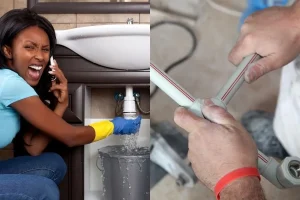
Adding a home addition or an accessory dwelling unit (ADU) is like giving your property a second heartbeat—but that new pulse needs plumbing to keep things flowing. Whether you’re building a granny flat, a backyard office, or expanding your kitchen, plumbing can make or break the project. Here’s the deal: skip the basics, and you’ll face leaks, clogs, or worse—city code violations.
Key Plumbing Factors to Plan For
Let’s dive into the nitty-gritty. Plumbing isn’t just about pipes; it’s about pressure, placement, and permits. Miss one detail, and you’re backtracking with a sledgehammer.
1. Water Supply Lines
Your existing system might groan under the added demand. Older homes? They often have half-inch pipes—fine for a single bathroom but a nightmare for a new shower, toilet, and kitchenette. Upgrading to three-quarter-inch lines ensures steady water flow. Pro tip: Map your current supply routes before cutting into walls.
2. Drainage and Venting
Ever heard a gurgling sink? That’s bad venting. ADUs need proper drain-waste-vent (DWV) systems to avoid sewer gases backing into your space. Slope matters too—1/4 inch per foot for drainage pipes keeps things moving. And if your addition is far from the main stack, you might need a sewage ejector pump (not as fun as it sounds).
3. Hot Water Heater Capacity
Adding a bathroom? Your 40-gallon tank won’t cut it. Tankless heaters are a slick solution—endless hot water without hogging space. But they require gas lines or heavy-duty electrical upgrades. Point is: size your system before the walls go up.
Permits and Codes: Don’t Wing It
Local codes aren’t suggestions—they’re law. Ignore them, and you’ll pay fines or redo work. Common gotchas:
- Fixture spacing: Toilets need 15 inches from center to any wall. Skimp, and inspectors won’t sign off.
- Pipe materials: Some cities ban PVC for certain applications. Copper or PEX might be mandatory.
- Backflow prevention: Required if your ADU has irrigation or a separate meter.
Honestly, hiring a plumber who knows your area’s quirks saves headaches later.
Budget Realities: Hidden Costs Add Up
Sure, you budgeted for pipes and labor. But what about:
- Excavation: Running lines under a slab or yard? Heavy machinery isn’t cheap.
- Insulation: Frozen pipes in winter? No thanks. Northern climates need heat tape or deeper burial.
- Unexpected tie-ins: That “simple” sink install might reveal corroded galvanized pipes needing full replacement.
Pad your budget by 15-20% for surprises. Trust us.
Eco-Friendly Plumbing Options
Going green isn’t just trendy—it saves cash long-term. Consider:
- Greywater systems: Recycle sink/shower water for landscaping (where legal).
- Low-flow fixtures: Modern designs don’t sacrifice pressure. A 1.28-gallon toilet can flush like a champ.
- PEX piping: Uses fewer resources than copper and resists freezing cracks.
Some cities even offer rebates for water-efficient upgrades. Worth a Google.
Final Thought: Future-Proof Your Pipes
A home addition or ADU should last decades. So ask: Will this plumbing handle kids, renters, or climate shifts? Overbuilding slightly today beats emergency repairs tomorrow. And hey—maybe run an extra conduit for that future outdoor shower you’ve been dreaming about.




